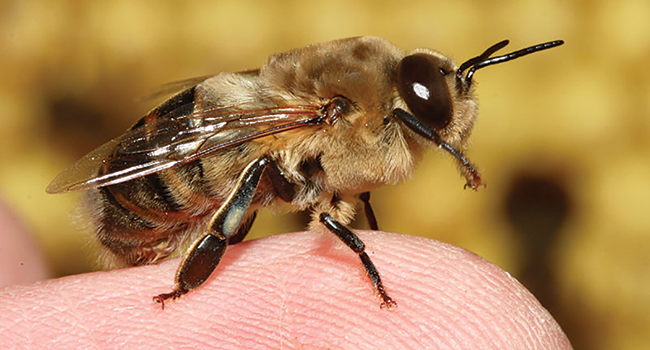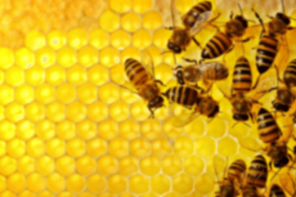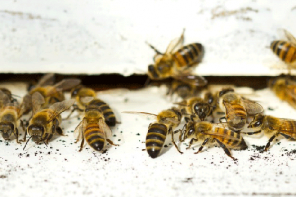By Stephen Bishop
By the third group, I had my timing and applause lines down. To be fair, elementary school students are easy to entertain.
I usually start with a poster of bees, native bees, and ask them which one is a honey bee. Some little fingers point to a bumble bee and some to a carpenter bee and others to an orchard mason bee. It’s a trick question, of course, and the kids are flabbergasted that I might play a trick on them.
And so, I tell them honey bees are special – and ask them why pilgrims brought honey bees with them to America. This is no trick question: for honey and beeswax. One skeptic doesn’t believe me and wants to know how pilgrims brought bees on the boat without getting stung. That is a good question. Indeed German Black Bees plus wave action seem like an iffy combination, so I just tell him waves put bees asleep. Then, like any defensive adult worried about being outsmarted by a 3rd grader, I change the subject and go on the offensive. I begin a line of questioning about honey: What is honey? What is nectar? I tell them honey is like bees’ version of Mountain Dew; it gives bees lots of energy. I pass around a frame of honey.
I proceed to pollen. Pollen is like cheeseburgers and pizza. It provides proteins for muscles for wings and bee legs. I pass around a frame of multicolored pollen, and one kid asks which color pollen taste like pizza and which one tastes like cheeseburgers. I dodge again and move on to demographics.
Bee demographics provide easy material. I start with the number of bees in a hive. Some children guess 100 or 1000. They are, literally, taken aback that 30,000 bees inhabit a hive. Some retreat, concerned that I might have 30,000 bees hiding in the empty display hive beside me. I then target the strained gender relations in elementary school. I ask them how many bees in the hive are girls. Most say “one,” the queen. I tell them the queen is female, but all workers bees are female too. To shock and awe, I tell them nearly all bees in the hive are female, and the few boys don’t do any work. All the girls in the class take umbrage and say that’s not fair. The boys start laughing. Then I tell them the female bees get revenge because they kick the boy bees out of the hive into the cold before winter to die. This nearly triggers a riot.
But what happens next is strange. A young boy, hitherto silent and sitting cross-legged on the floor in the back, shouts out, “And boy bees are called drones!” Even his classmates, who were hurling boy versus girl insults, quiet down. “Yes, boy bees are called drones,” I affirm, indeed impressed that a third grader knows this. I notice the teacher and assistant look at one another, but I think little more of the comment and continue with my elementary school greatest hits. I adorn two eager volunteers in bee suits, let them pretend to smoke and work a hive. Then I wrap things up and prepare to rewind for another group.
While the class lines up to march to another station, the teacher approaches and whispers that the boy who mentioned the drones rarely talks, that he has autism. She’s stunned he knew about drones. Then she heads off to escort her tribe, as another group of eager children approach for round four. By the end of the school day, after many more rounds, my voice is nearly gone and my brain is drained. And as I pack up, I think about the boy who knew about drones – and I feel invigorated.








